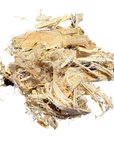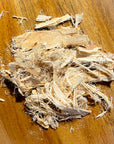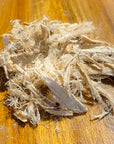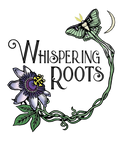


Slippery Elm Bark
Botanical name: Ulmus rubra
^Organic
Slippery elm bark, derived from the inner bark of the Ulmus rubra tree, belongs to the Ulmaceae family. This deciduous tree is native to North America and typically grows in wooded areas, often found in rich, moist soils. Slippery elm bark is recognized for its smooth, mucilaginous texture when mixed with water, which has made it a favored herb in herbal medicine.
In herbal practices, slippery elm bark is traditionally valued for its soothing properties, particularly for digestive health. It can be prepared as a tea, powder, or lozenge, offering a mild, slightly sweet flavor. Historically, indigenous peoples used slippery elm bark for its potential benefits in alleviating throat irritation and digestive discomfort, appreciating its gentle nature.*
*These statements have not been evaluated by the Food and Drug Administration. This product is not intended to diagnose, treat, cure, or prevent any disease. For educational purposes only.



